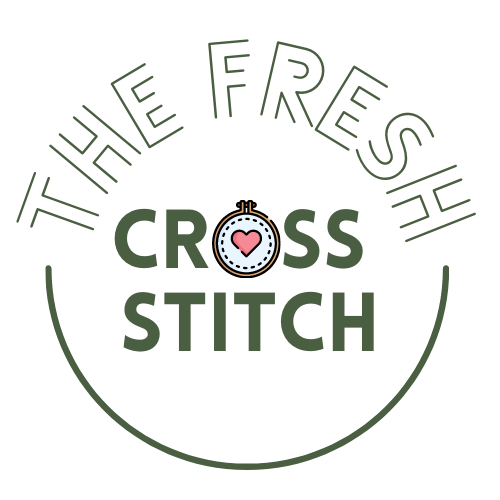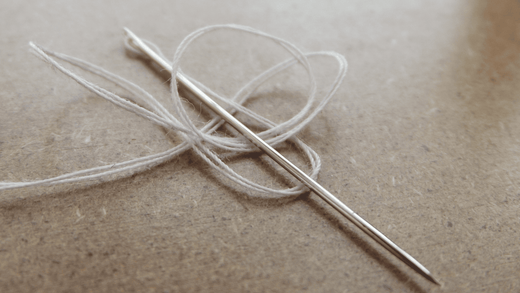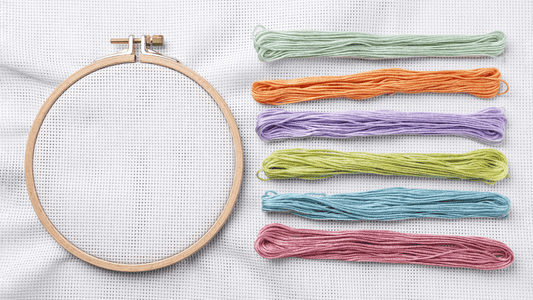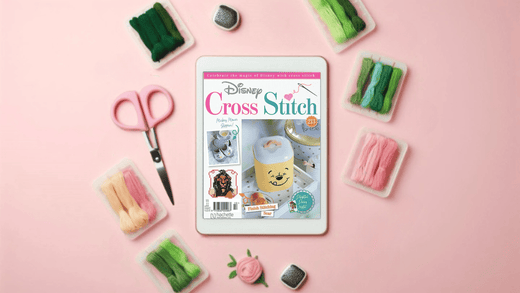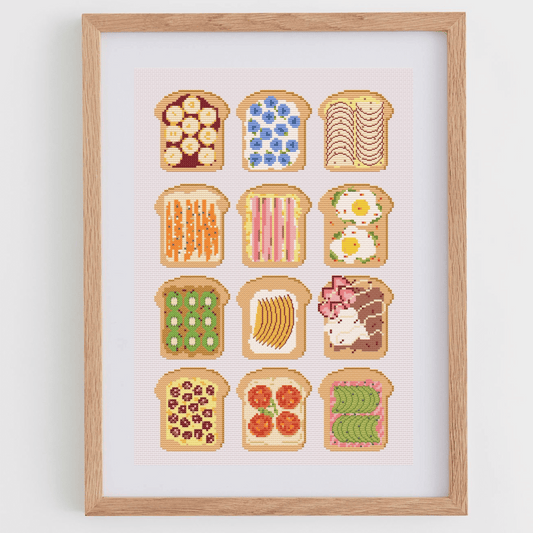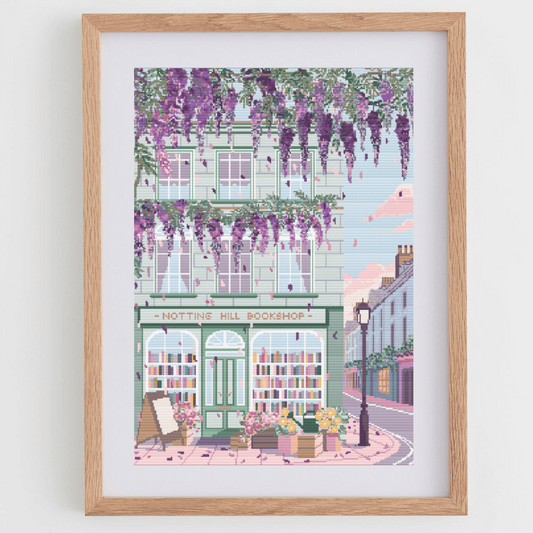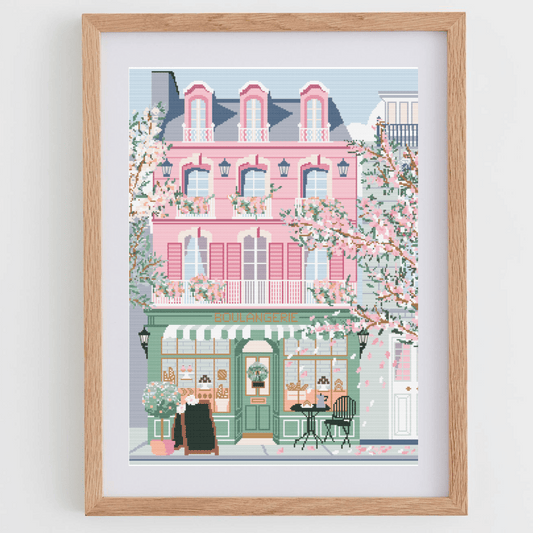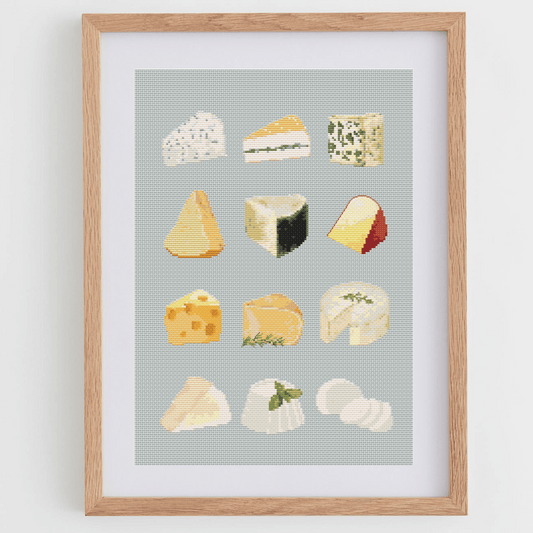Did you know about these fascinating facts about cross stitch? Whether you're an experienced stitcher or someone curious about picking up a needle for the first time, there’s so much more to this craft than meets the eye. These are some of my favorite curiosities about cross stitch.
1. Cross stitch originated and Asia and the Middle East
Cross stitch traces its origins to ancient times, with the earliest examples discovered in the 6th century in Asia and the Middle East. It was used to decorate clothing, household items, and ceremonial fabrics, blending functionality with artistry. This early embroidery technique laid the foundation for the craft as we know it today. Even though its exact origin is not clear, many researches point it flourished during the Tang dynasty in China.
2. It originated around 600 AD
Though exact dates are hard to pinpoint, cross stitch has been around for over 1,500 years. Its first recorded uses in early human history involved decorating garments with geometric patterns. By the medieval period, cross stitch evolved into a prominent form of embroidery in Europe, with patterns and designs reflecting local cultures and traditions.
Learn more about the history of cross stitch.
3. The oldest cross-stitch piece is a sampler by Jane Bosticke
Jane Bosticke is the author of the oldest cross-stitch piece we have. In 1598, Bosticke, a young girl from England, created a stunning sampler that has since become a piece of history. This embroidery, crafted with silk threads on linen fabric, features an assortment of elements, including an alphabet, floral patterns, and personal details such as the birth of her cousin, Alice Lee. It used to be displayed at the Victoria and Albert Museum in London.
4. It spread westward along the trade routes
The spread of cross stitch coincided with trade and cultural exchange. As people traveled and interacted across continents, they shared techniques, materials, and patterns. For example, the Silk Road played a vital role in spreading embroidery methods from Asia to Europe. Colonization and global trade in later centuries further contributed to the worldwide popularity of cross stitch.
5. It was an indicator of wealth and status
Historically, cross stitch served both functional and decorative purposes. It was used to reinforce and embellish clothing, mark household linens with family initials, and create ceremonial or religious items. In the Middle Ages, samplers became a way to record patterns and demonstrate embroidery skills. For young girls, stitching samplers was a common way to learn patience, precision, and domestic skills.
Cross stitch has long been associated with more than just domestic life; it was a symbol of wealth, refinement, and even political expression, practiced not only by commoners but also by the elite. Mary, Queen of Scots, was a notable cross stitcher, spending much of her imprisonment crafting intricate embroidery. These elaborate pieces were often displayed to reflect the family’s affluence and the woman’s cultural sophistication, elevating cross stitch from a mere hobby to an art form tied to power and privilege.
6. It’s a generational tradition
Cross stitch has traditionally been a deeply personal and familial craft, passed down through generations, particularly among women within households. Mothers, grandmothers, and older sisters would teach the younger members of the family the skills needed to create intricate designs, often using patterns that held sentimental or cultural significance. Heirloom samplers, stitched with care and adorned with family names, dates, and meaningful motifs, became cherished keepsakes, preserving not only artistic traditions but also family histories. This transmission of knowledge served as both a bonding experience and a way for women to share stories, values, and their cultural heritage. Even today, while modern crafting communities and online tutorials play a role, much of the art form's legacy continues through the hands of women, maintaining its roots as a practice steeped in home and tradition. This passing of skills within families underscores the vital role women have played in keeping cross stitch alive and evolving over centuries.
7. It’s experiencing a digital revival
Cross stitch has experienced a renaissance in recent years, thanks to its relaxing and meditative nature. In our fast-paced digital age, many people are turning to crafting as a way to unwind. Social media platforms and cross-stitch shops on Etsy, among others, have also fueled its comeback, offering a wealth of modern patterns and inspiration for stitchers of all levels.
8. Eastern Europe is one the areas where cross stitch is more popular
While cross stitch is practiced worldwide, some countries are particularly renowned for their unique styles and cultural contributions:
- Ukraine and Hungary: Known for their vibrant, traditional patterns often stitched on clothing.
- China: Famous for intricate silk embroidery and elaborate cross-stitch kits.
- Mexico: Rich in colorful floral and folkloric motifs.
- United States and United Kingdom: Leading the modern cross-stitch movement with innovative patterns and a strong crafting community.
9. It has many health benefits
Engaging in cross stitch offers numerous physical and mental health benefits.
- Improved fine motor skills: The repetitive motions involved in stitching enhance dexterity and hand-eye coordination.
- Stress relief: Focusing on the methodical process of stitching helps reduce stress and promotes relaxation.
- Cognitive benefits: Following patterns and counting stitches stimulate the brain and improve focus.
These are just some of them, but you can explore more health benefits of cross stitch in my blog!
10. It has therapeutic benefits in rehabilitation
Cross stitch has found its place in therapy and rehabilitation programs. Occupational therapists use it to help patients recovering from strokes or injuries regain fine motor skills. It also offers a sense of accomplishment, boosting confidence and mental well-being. Additionally, cross stitch is used in mental health treatments as a form of art therapy.
11. It’s great for children’s cognitive development
Cross stitch is a fantastic activity for children, offering:
- Skill development: Improves hand-eye coordination, patience, and problem-solving skills.
- Creativity: Encourages artistic expression through colors and patterns.
- Confidence: Completing a project gives children a sense of achievement and pride.
12. It’s a sustainable practice
As environmental awareness grows, many stitchers are adopting sustainable practices. Using organic threads, recycled fabrics, and upcycled materials reduces waste and promotes eco-friendly crafting. Handmade cross-stitch projects also offer an alternative to mass-produced decor, contributing to a more sustainable lifestyle.
13. It has its own Guinness World Records
Cross stitch is not only a beloved craft but also the subject of impressive world records, including an official Guinness World Record.
This prestigious record recognizes Naomi Katagiri as the fastest cross-stitcher in the world. On May 18, 2024, in Niigata, Japan, Naomi achieved an astonishing 11 cross-stitches in just one minute. Even more impressive is the fact that she accomplished this feat on her very first attempt, demonstrating her exceptional speed and precision in the craft.
While this is the only Guinness-certified record for cross stitch, there are other noteworthy achievements within the community, such as the creation of some of the largest cross-stitch projects ever documented. These massive undertakings, though unofficial, showcase the dedication and creativity of stitchers around the globe, highlighting the endless possibilities within this timeless art form.
